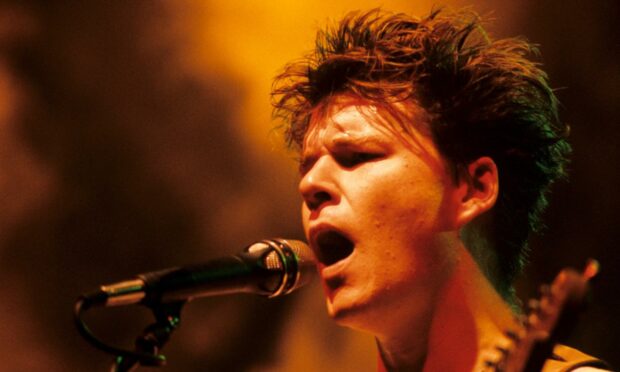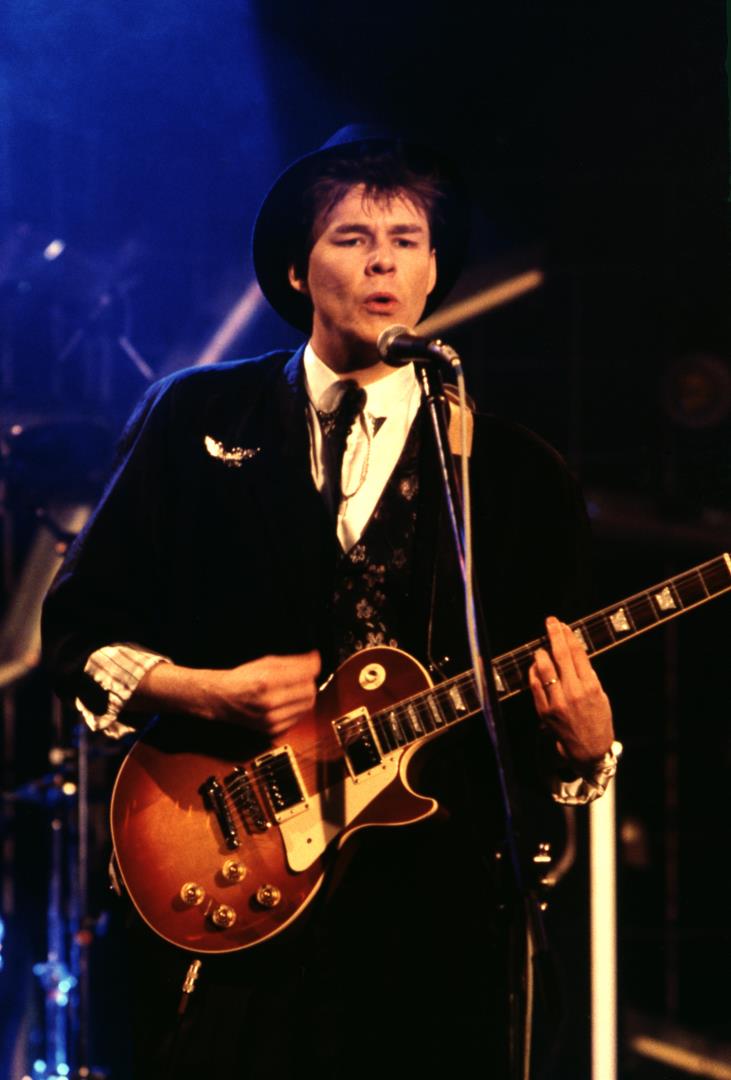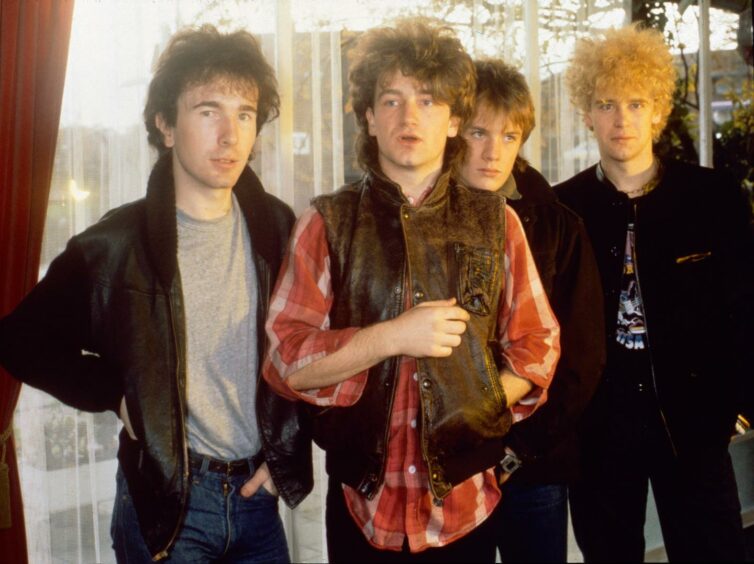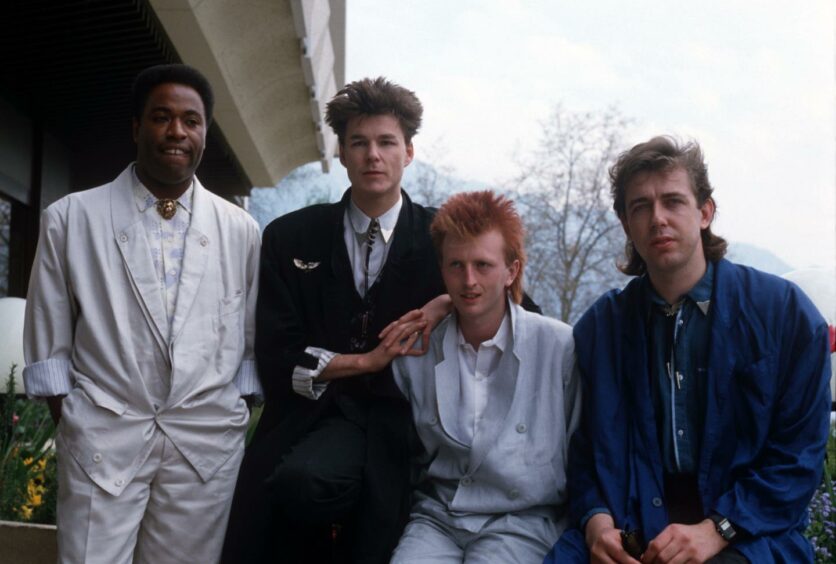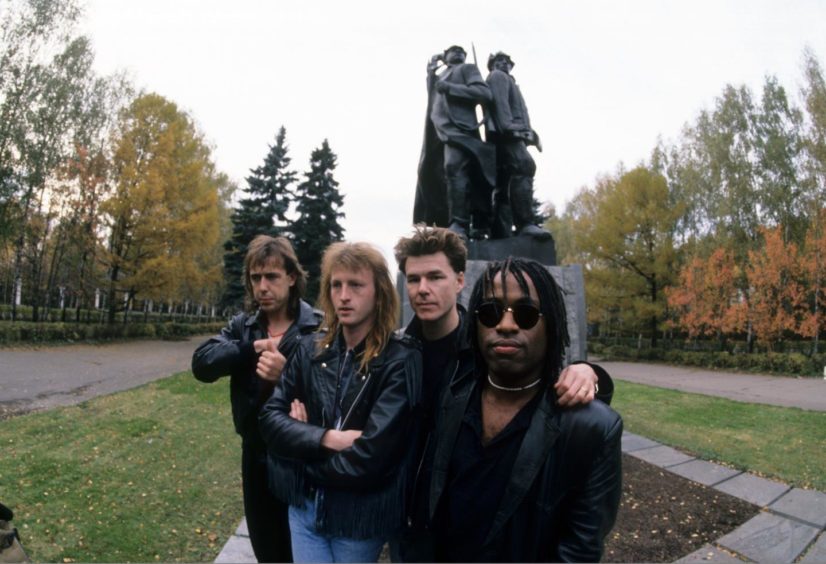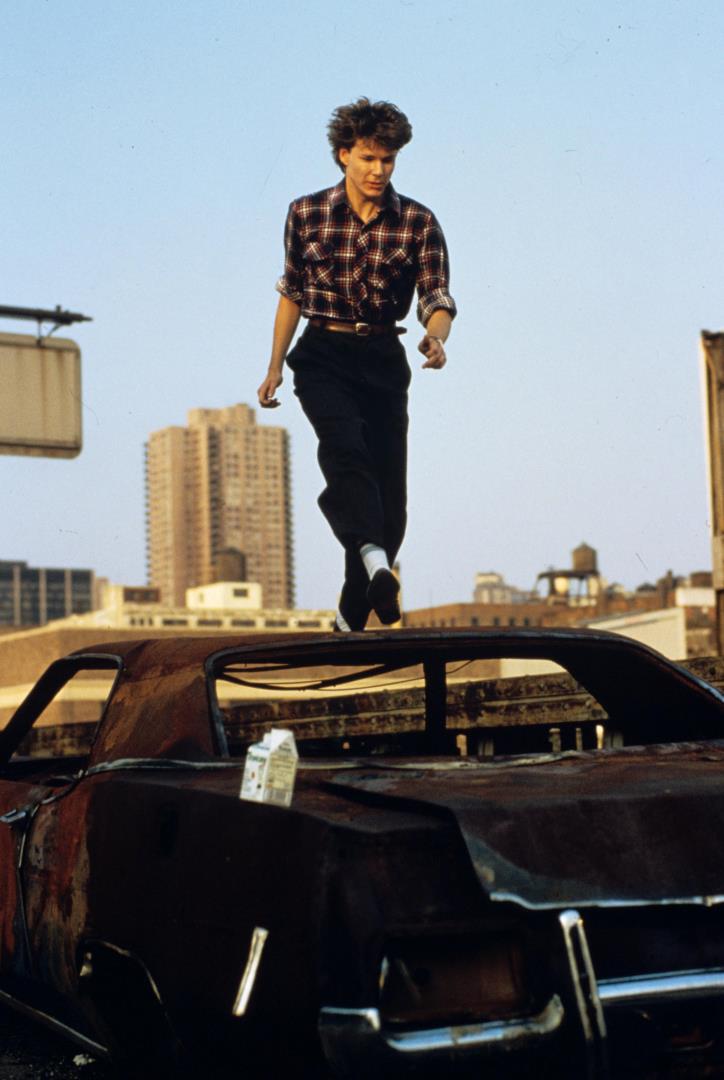“I cannot believe I am sitting at my desk typing this. Stuart Adamson was found dead in a hotel room in Hawaii yesterday. I have just lost one of the finest people I have ever worked with or been lucky enough to know.”
Big Country manager Ian Grant broke the news to fans after a frantic six-week search for Adamson that most feared would ultimately end in tragedy.
Adamson wrote some of the most poetic lyrics ever sung in a rock band but depression exacerbated his long-standing drink problem.
It was the second time he had disappeared in two years and Grant even hired a private detective to track him down.
He died alone on December 16 2001 in a Hawaiian hotel.
He was 43.
He was born in Manchester and grew up in the mining village of Crossgates in Fife.
Adamson inspired generations of songwriters and guitarists.
By the time he put Big Country together in 1981, he had already been a successful musician for a number of years, having formed The Skids at the age of 18.
John Peel described him as “the British Jimi Hendrix”.
Bruce Springsteen called him “the real deal”.
The Edge from U2 broke it down further.
“I was a fan of his both as guitar player and as a man,” he said.
“He was a great inspiration to me when U2 were starting out.
“His first band, The Skids, made such a big noise and with songs like Into The Valley and The Saints Are Coming made most of the other music of the time seem mundane and insignificant.
“Unfortunately, The Skids didn’t last long enough.
“I got to know Stuart when he was touring with Big Country – the group he founded and led after The Skids broke up.
“Big Country was all about Stuart; he did the singing and was the principal songwriter and guitar player.
“Stuart made some great music during his career and his character came through everything he did.
“He had a heart as big as a mountain and he was a real romantic soul.”
Steve Lillywhite
Hooking up with guitarist and long-time friend Bruce Watson, an early Big Country line-up also featured Clive Parker and brothers Pete and Alan Wishart.
They were soon replaced by bassist Tony Butler and drummer Mark Brzezicki.
Big Country shared Celtic guitar arrangements with U2 and producer Steve Lillywhite.
He produced early albums for U2.
Big Country started working on their debut album with legendary producer Chris Thomas but he really wasn’t on the same wavelength as the group.
Bono and The Edge caught a ferry from Dublin to Liverpool to see Big Country play at Dingwalls in 1982 and Lillywhite had come up in conversations.
Lillywhite was then called in to work on Fields Of Fire, Big Country’s second single, which made the Top Ten on its release in February 1983.
We will never know who threw the stone to the troubled water, but we hope he is at peace now.”
Tony Butler
“We gave them this great spirited, uplifting feeling,” he said.
“Chris Thomas’s recordings were flat and uninteresting and we managed to get something exciting going – and from that Stuart went off and wrote In A Big Country.
“I remember playing Bono the demo of In A Big Country, I was so absolutely knocked out by it.
“I felt very honoured to have inspired that.”
The band’s 1983 debut album, The Crossing, went on to sell more than two million copies worldwide.
Second album Steeltown went to number 1 in October 1984 and Adamson’s lyrics would articulate the plight of Britain’s embattled working class.
The band’s third album, 1986’s The Seer, was another big success in the UK.
Grammy Award nominations, support slots with The Rolling Stones and tours with the likes of Led Zeppelin’s Jimmy Page and Robert Plant all followed.
Shine Silently
Driving To Damascus, released in 1999, was the band’s eight studio album, before Adamson put Big Country on the backburner in 2000 after moving to Nashville.
He intended to work with Big Country again.
Sadly, it was not to be.
Skids singer Richard Jobson wishes he’d got to say goodbye.
He said: “Stuart was an incredibly talented musician.
“The whole episode of his death was tremendously sad.
“I was in denial of The Skids for a long time after we split up – I don’t know why.
“We never had a chance to say goodbye to Stuart – there was never any closure.”
People queued round the block in Dunfermline for Adamson’s memorial service.
Adamson’s favourite song, Nils Lofgren’s Shine Silently, was played during the service.
Big Country’s bassist, Tony Butler, said the singer had offered the group a huge talent in poetic, picturesque, socially landscaped lyrics.
“He hated being the centre of attention,” he said.
“He never got the credit he deserved and neither did the group.
“We refused to play the bubble gum pop game or worry about the big front man.
“He was never going to be a sort of Bono figure – he shunned that image.”
Offering an insight into the darker side of Adamson’s character, he added: “He was a proud and humble man and a troubled, sometimes tormented soul.
“We will never know who threw the stone to the troubled water, but we hope he is at peace now.”
Musical legacy
A charity tribute concert followed at Glasgow Barrowlands with a stellar line-up including his former Big Country pals, Midge Ure, Steve Harley and Runrig.
A double-CD of his best work was also released.
Adamson left his fans with a legacy in his music.
Here was a teenager from Crossgates who became a global success but didn’t chase the bright lights and stayed in Fife during the band’s glory years.
Adamson himself, writing for the sleeve notes for Steeltown, put it perfectly.
“If music is important, it has to come down to emotion,” he said.
“It should be a human thing.
“Maybe that has something to do with coming from Scotland, where music has always been really close to the heart of the community.”
More like this:
Stuart Adamson: Could Big Country have been called The Rodeo Giants?
Unseen images of the Rolling Stones in 1982 – in colour
Eurythmics in Dundee: The rowdy Barracuda gig Annie Lennox will never forget
